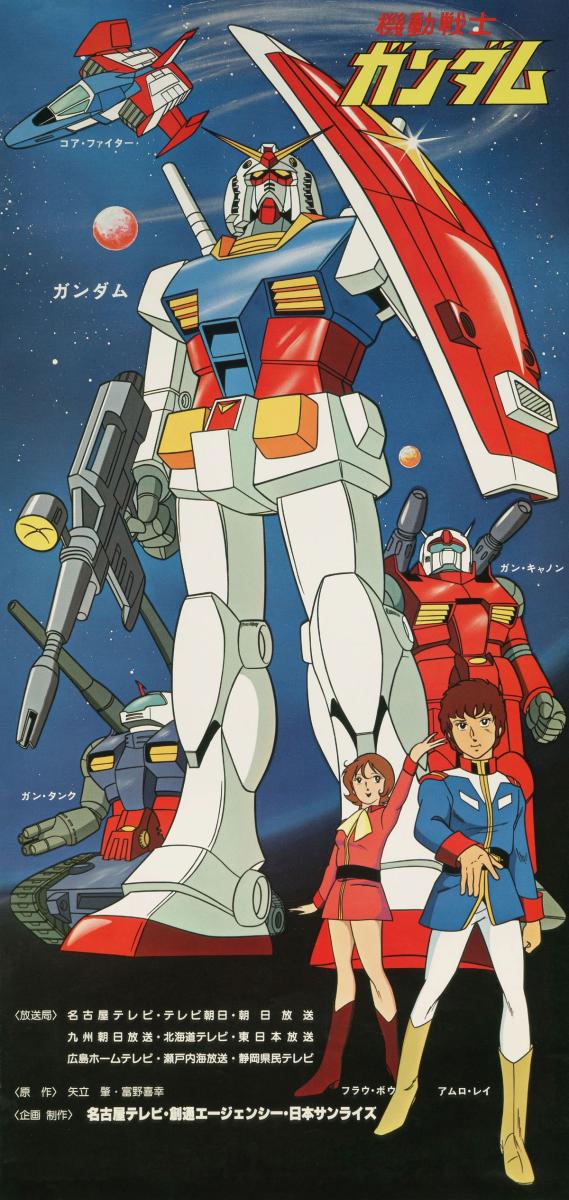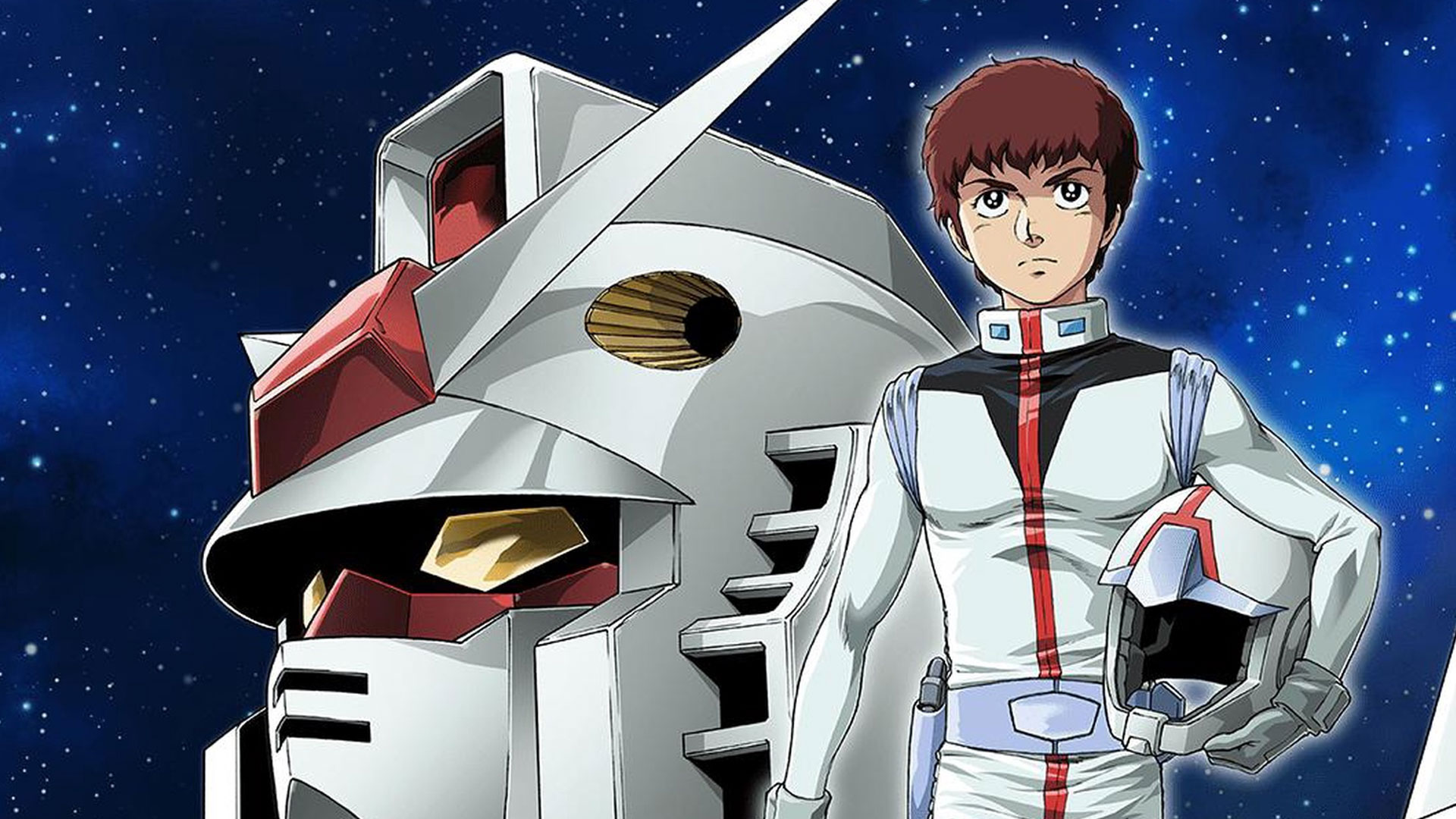Yes, the franchise is enormously large — and enormously diverse.
Summary:
- Many otaku are afraid of getting into the Mobile Suit Gundam franchise due to its size.
- The franchise is split into different timelines, and many series are actually standalone spin-offs.
- Spin-offs may have very different tones from the original and from each other.
- You should probably start with the original series, or pick up a spin-off that you feel you might enjoy.
Mobile Suit Gundam (Kidou Senshi Gundam) is one of the most iconic anime franchises and a mecha classic. That said, it seems almost impossible to get into for a new fan: there are around a thousand episodes total, and it looks impossible to watch all of it. The secret is, you don’t actually need to.
The main timeline, Universal Century

The franchise is split into separate universes, which are called “timelines” or “centuries.” The main timeline, Universal Century, or UC, starts with the original Mobile Suit Gundam anime, also called by many fans “0079.”
0079 is often said to be too dragged out, and if you also feel like it, you can watch the recap movies instead. It is followed by Zeta Gundam — which many still consider one of the best parts of the franchise (don’t watch the recaps for this one, though).
After Zeta, there is Gundam ZZ, which many consider one of the lowest points of the franchise. Its largely comedic, at first, nature and mood whiplashes made many people hate it. At least we got an iconic opening from it.
Gundam ZZ is followed by Char’s Counterattack. While this movie is largely divisive, it’s still arguably the best part of the franchise visually. F91 and Victory Gundam are also technically a part of Universal Century, but they are largely standalone — and are far enough in it that it doesn’t even matter.
Unicorn, Narrative (NT) and Hathaway (Senkou no Hathaway) are modern-day sequels that also take place in the UC timeline. They require some background information, so fans don’t recommend watching them without the older series first: that said, if you’re just trying to get a taste of the franchise, Unicorn might not be the worst place to start.
Many spin-offs also take place in the UC timeline. Notable examples are War in the Pocket (Pocket no Naka no Sensou), The 08th MS Team (Dai 08 MS Shoutai), Stardust Memory and Thunderbolt. Any of these can be watched as standalone series.
There’s also Gundam the Origin, which is a prequel to 0079, explaining parts of the backstory — this one is very popular with critics.
Alternative universes

Most other things take place in separate timelines — and don’t require any prior knowledge before watching them. The most recent one is The Witch from Mercury (Suisei no Majo), which, for many, was the first-ever Gundam series they watched.
The Witch from Mercury is actually a bit unusual for alternate universe (AU) Gundams: normally, they used to go on for four cours (or even longer) in total, but The Witch from Mercury tells a complete story in just two episodes.
Other notable series that got many people into the franchise include Mobile Suit Gundam 00 (or Double O) and Iron-Blooded Orphans (Tekketsu no Orphans). The latter is written by Mari Okada — famous for Anohana: The Flower We Saw That Day and Maquia: When the Promised Flower Blooms, and, as such, is somewhat controversial with more hardcore Gundam fans.
.jpg)
That said, you shouldn’t dismiss older Gundam AUs either: series like Wing and SEED were extremely popular back in the day, and helped shape the anime fandom. Both were quoted to somewhat inspire Code Geass: Lelouch of the Rebellion (Code Geass: Hangyaku no Lelouch).
SEED is actually getting more attention in Japan right now: after many years, the new movie, Mobile Suit Gundam SEED Freedom, has been released, and it’s taking the cinemas by storm.
Some of the AUs are noticeably different from the rest of the franchise. Perhaps the most famous example is Mobile Fighter G Gundam (Kidou Butouden G Gundam), which uses mobile suits for space martial arts tournaments. Yoshiyuki Tomino, the creator of the franchise, did not have much involvement in the AU series.
Special cases
There are two somewhat unique cases in the franchise that can’t really be classified as alternative universes — but don’t exactly fall into the known UC timeline so far.
∀ Gundam (Turn A Gundam) is said to take place in “the Correct Century,” which is after the world has already been ruined by a conflict. It has multiple references to both UC and AU Gundam series, which is notable in itself.
Gundam Reconguista in G (Gundam: G no Reconguista), or G-Reco, is somewhat similar. Said to take place in Regild Century, this one actually canonically states it is a sequel to all UC series — Regild Century follows Universal Century, apparently.
The series is very dense, and many fans regard it as nearly unwatchable and approach it with caution. That said, it does have a certain amount of fans.
Other stuff
While the main theme of Gundam has always been the horror of war, that doesn’t mean the franchise doesn’t have its light-hearted moments, either. There are many chibi and otherwise comedic spin-offs, mainly in the form of SD (Super Deformed) Gundam series of varied flavors.
One of them, SD Gundam Force, is infamous for being aimed at young kids and having atrocious CGI animation — but most of them aren’t that bad.
Speaking of kids’ series, Gundam Build Fighters and Gundam Build Divers focus on Gunpla, the Gundam models, and mostly serve to promote the toys. While the target audience was kids at first, many older fans who care a lot about the technical details of various mobile suits found themselves enjoying these series.
Of course, there is always more to the franchise — many other short movies, spin-offs and OVAs have not been covered here. You can still check them out if you are enjoying Gundam: and the usual places to start would be either 0079 or a spin-off of your choice (seriously, just pick one with an appealing synopsis — or go in blind into any of them).

